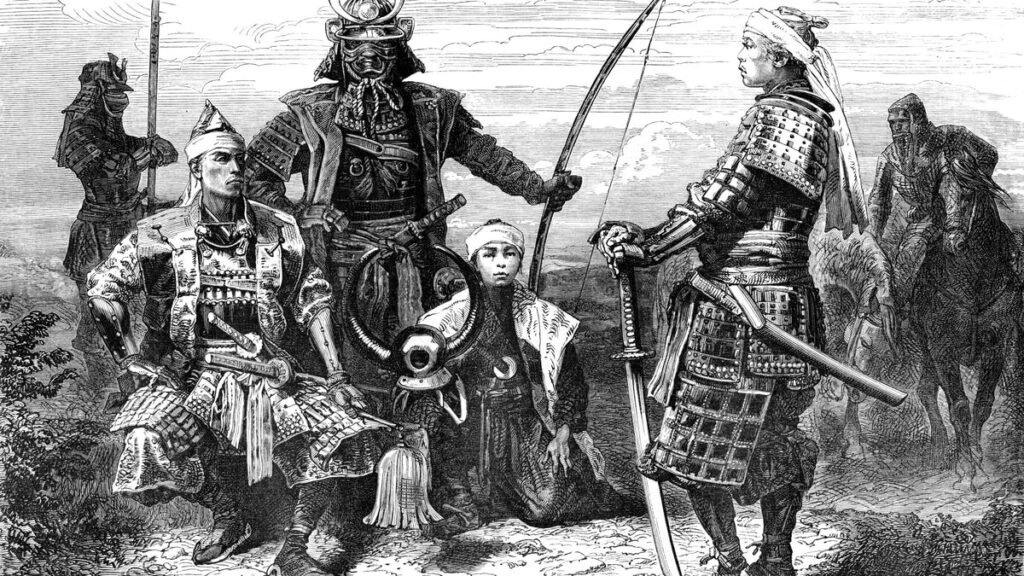Yasuke was an African warrior in the employ of Nobunaga, a powerful feudal lord known as the “Great Unifier,” during Japan’s Sengoku period. The first Black samurai, he was at Nobunaga’s side when the daimyo died; according to popular lore, Nobunaga tasked Yasuke with returning his head to his son.
A samurai is a member of Japan’s warrior class, known for their swordsmanship and the code of Bushido, which emphasized honor, loyalty, and self-discipline. The term “samurai” also refers to the warrior class itself, which ruled Japan for centuries
Yasuke, born in year 1555 C.E from Eastern Africa was a valet and bodyguard of the Jesuit missionary Alessandro Valignano who rose to become a member of the inner circle of the warlord Oda Nobunaga, Japan’s first “great unifier.”
Due to his favor with Nobunaga and presence at his side in at least one battle, Yasuke is commonly held by Japanese historians to be the first recorded “samurai” of foreign birth, although this has been disputed by some people.
The earliest record of Yasuke dates to 1581. He received his name from Oda Nobunaga. His birth name is unknown.
Yasuke was born in Africa, possibly among the Dinka people of what is now South Sudan based on contemporaneous physical descriptions by Ōta and Matsudaira, though some secondary sources from the 17th century suggest the vicinity of modern-day Mozambique. The only report of Yasuke’s age is from Ōta’s Shinchōkōki (“The Chronicle of Lord Nobunaga”), a biography of Nobunaga, which describes Yasuke in 1581 as being in his mid-20s, suggesting that his birth year was about 1555.
Yasuke first enters the historical record in 1581 as an attendant bodyguard of the Jesuit missionary Alessandro Valignano, who had been dispatched by Pope Gregory XIII to inspect the new Roman Catholic missions in Asia. Many sources say that Yasuke came with Valignano from “the Indies,” indicating that they probably met in Portuguese-controlled Goa or Cochin (modern-day Goa and Kochi in India), although in contemporary terms the Portuguese-held Island of Mozambique could also conceivably have been classed as “the Indies.”

In an unpublished but extant document from about this time, Ōta states that Nobunaga made Yasuke a vassal, giving him a house, servants, a sword, and a stipend. During this period, the definition of samurai was ambiguous, but historians think that this would contemporaneously have been seen as the bestowing of warrior or “samurai” rank. This is where the claim that Yasuke was a samurai originates.
First Historical evidence of Yasuke
The primary source documents pertaining to Yasuke’s life are Portuguese-language Jesuit reports from the late 16th century (originally published in 1598) and works of the Japanese chroniclers Ōta Gyūichi and Matsudaira Ietada. A few additional documents are thought to pertain to Yasuke, such as a letter from Mozambique discovered in 2021 by Oka Mihoko, a professor at the University of Tokyo, but, as the subjects are not directly named, it is possible that they refer to other people. Furthermore, it is possible that other references to Yasuke have been lost or remain to be discovered in the future.
There is also some pictorial evidence thought to depict Yasuke on a range of lacquerware accessories such as chests, writing boxes, and gunpowder containers, although authenticating these pieces as genuine portraiture has not yet proved possible.
Sakai City Museum in Ōsaka prefecture holds a folding screen thought to have been created in the early 17th century by an unknown artist. It depicts an African person, thought by historians to be Yasuke, wrestling a Japanese man while surrounded by onlookers, many of whom are awaiting their turn to wrestle. One of the spectators appears to be Nobunaga. Artworks such as these show that Yasuke’s memory lived on in the Japanese popular consciousness for decades after the events for which he is remembered occurred.
Stay tuned for the continuation of the story on one of Africa’s great men




